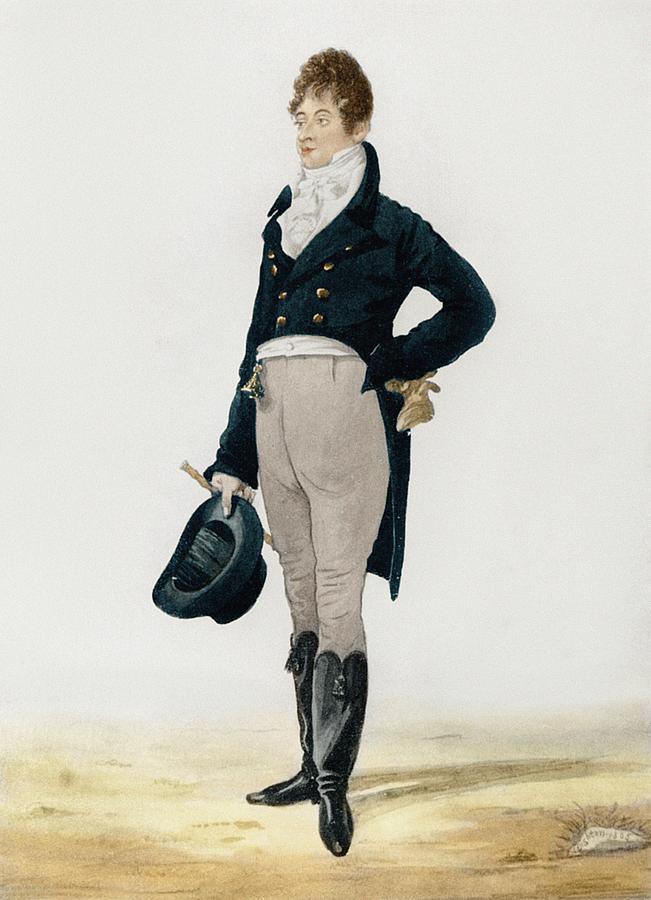|
Dress Coat
A tailcoat is a knee-length coat characterised by a rear section of the skirt, known as the ''tails'', with the front of the skirt cut away. The tailcoat shares its historical origins in clothes cut for convenient horse riding in the Early Modern era. Ever since the 18th century, however, tailcoats evolved into general forms of day and evening formal wear, in parallel to how the lounge suit succeeded the frock coat (19th century) and the justacorps (18th century). Thus, in 21st-century Western dress codes for men, mainly two types of tailcoats have survived: #Dress coat, an evening wear with a squarely cut away front, worn for formal white tie #Morning coat (or ''cutaway'' in American English), a day wear with a gradually tapered front cut away, worn for formal morning dress In colloquial language without further specification, "tailcoat" typically designates the former, that is the evening (1) dress coat for white tie. History Shadbelly In equestrianism, a variant calle ... [...More Info...] [...Related Items...] OR: [Wikipedia] [Google] [Baidu] |
Coat (clothing)
A coat typically is an outer garment for the upper body as worn by either gender for warmth or fashion. Coats typically have long sleeves and are open down the front and closing by means of buttons, zippers, hook-and-loop fasteners, toggles, a belt, or a combination of some of these. Other possible features include collars, shoulder straps and hoods. Etymology ''Coat'' is one of the earliest clothing category words in English, attested as far back as the early Middle Ages. (''See also'' Clothing terminology.) The Oxford English Dictionary traces ''coat'' in its modern meaning to c. 1300, when it was written ''cote'' or ''cotte''. The word coat stems from Old French and then Latin ''cottus.'' It originates from the Proto-Indo-European word for woolen clothes. An early use of ''coat'' in English is coat of mail (chainmail), a tunic-like garment of metal rings, usually knee- or mid-calf length. History The origins of the Western-style coat can be traced to the sleeved, close- ... [...More Info...] [...Related Items...] OR: [Wikipedia] [Google] [Baidu] |
Levee (ceremony)
The levee (from the French word ''lever'', meaning "getting up" or "rising") was traditionally a daily moment of intimacy and accessibility to a monarch or leader, as he got up in the morning. It started out as a royal custom, but in British America it came to refer to a reception by the sovereign’s representative, which continues to be a tradition in Canada with the New Year's levee; in the United States a similar gathering was held by several presidents. History France In Einhard's ''Life of Charlemagne'', the author recounts the Emperor's practice, when he was dressing and putting on his shoes, to invite his friends to come in and, in case of a dispute brought to his attention, "he would order the disputants to be brought in there and then, hear the case as if he were sitting in tribunal and pronounce a judgement." By the second half of the sixteenth century, it had become a formal event, requiring invitation. In 1563 Catherine de' Medici wrote in advice to her son, the Kin ... [...More Info...] [...Related Items...] OR: [Wikipedia] [Google] [Baidu] |
Dress Code (Western)
Western dress codes are a set of dress codes detailing what clothes are worn for what occasion. Conversely, since most cultures have intuitively applied some level equivalent to the more formal Western dress code traditions, these dress codes are simply a versatile framework, open to amalgamation of international and local customs. This versatility has made this scale of formality a practical international formality scale. Classifications are divided into formal wear (''full dress''), semi-formal wear (''half dress''), and informal wear (''undress''). Anything below this level is referred to as casual wear, although sometimes in combinations such as "smart casual" or "business casual" in order to indicate higher expectation than none at all. Etiquette For both men and women, hats corresponding to the various levels of formality exist. As supplements to the standard dress codes headgear (''see biretta, kippah etc.'') can be worn. Ceremonial dress, military uniform, religious ... [...More Info...] [...Related Items...] OR: [Wikipedia] [Google] [Baidu] |
Spy Delacouur
Espionage, spying, or intelligence gathering is the act of obtaining secret or confidential information (intelligence) from non-disclosed sources or divulging of the same without the permission of the holder of the information for a tangible benefit. A person who commits espionage is called an ''espionage agent'' or ''spy''. Any individual or spy ring (a cooperating group of spies), in the service of a government, company, criminal organization, or independent operation, can commit espionage. The practice is clandestine, as it is by definition unwelcome. In some circumstances, it may be a legal tool of law enforcement and in others, it may be illegal and punishable by law. Espionage is often part of an institutional effort by a government or commercial concern. However, the term tends to be associated with state spying on potential or actual enemies for military purposes. Spying involving corporations is known as industrial espionage. One of the most effective ways to gathe ... [...More Info...] [...Related Items...] OR: [Wikipedia] [Google] [Baidu] |



_1902.jpg)
